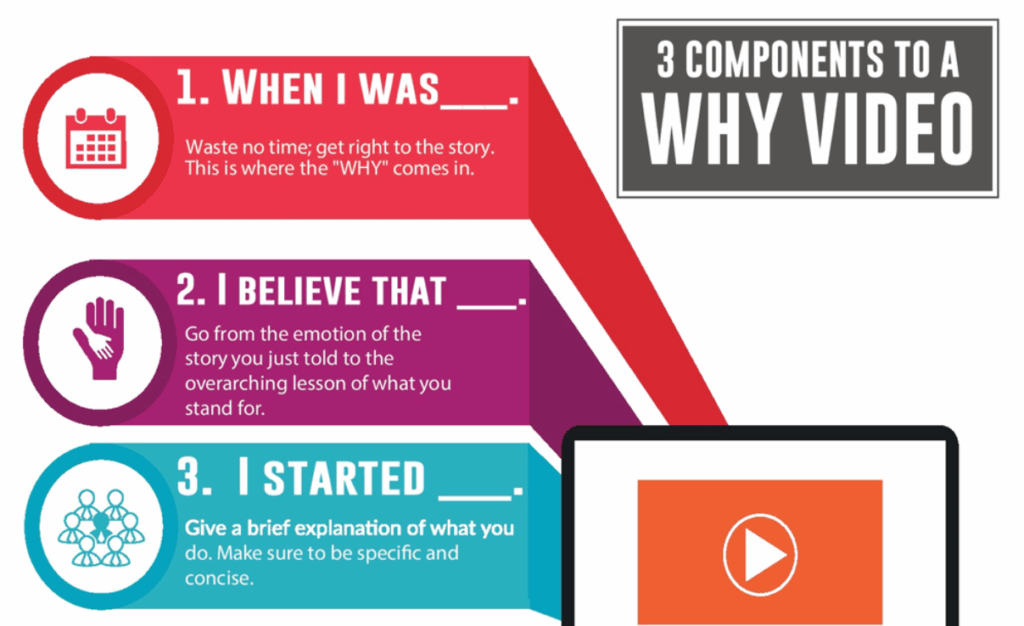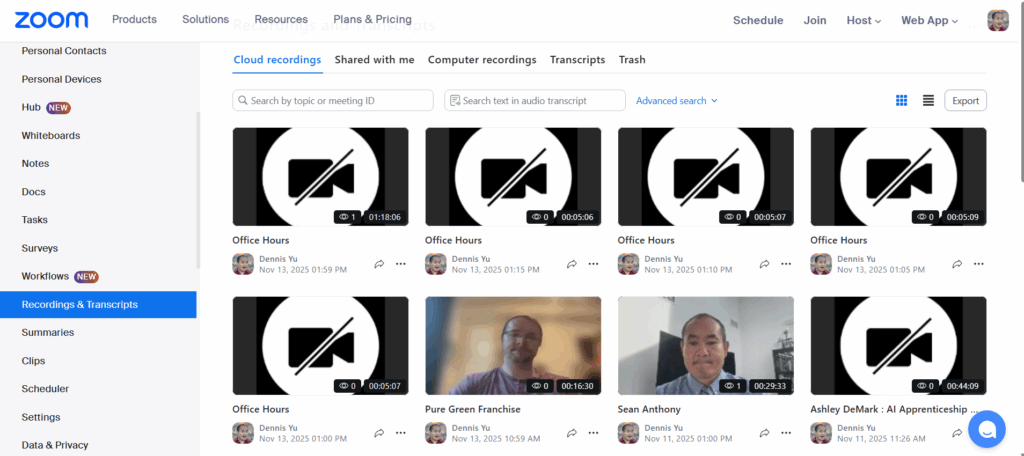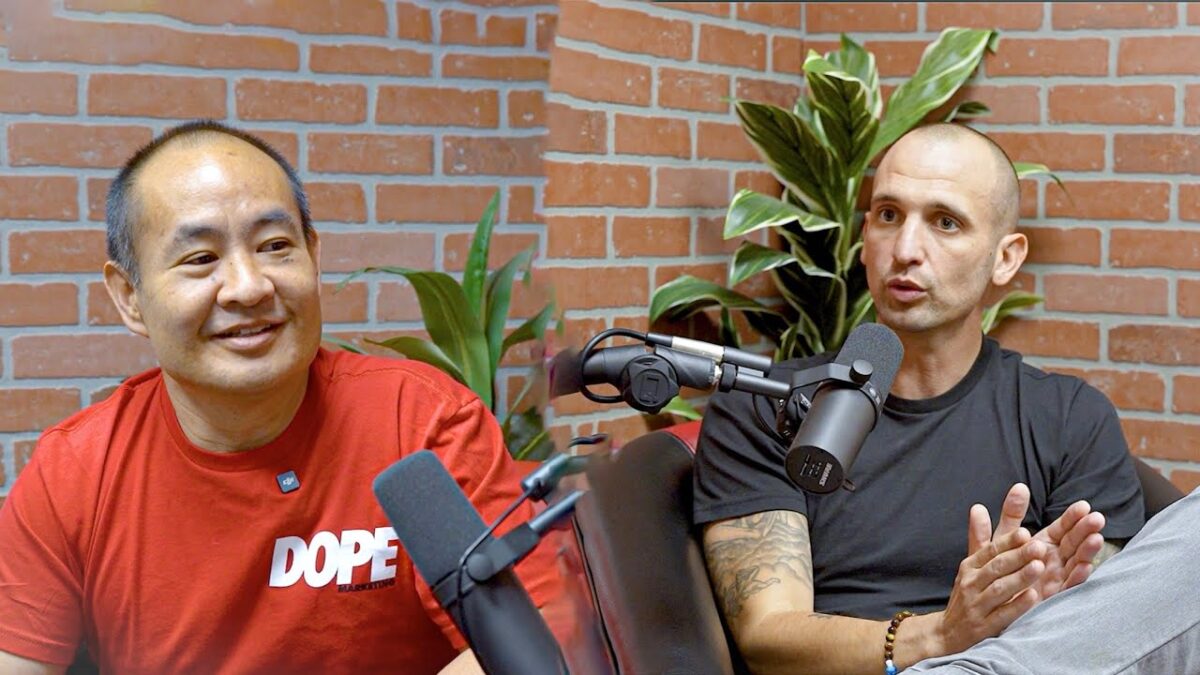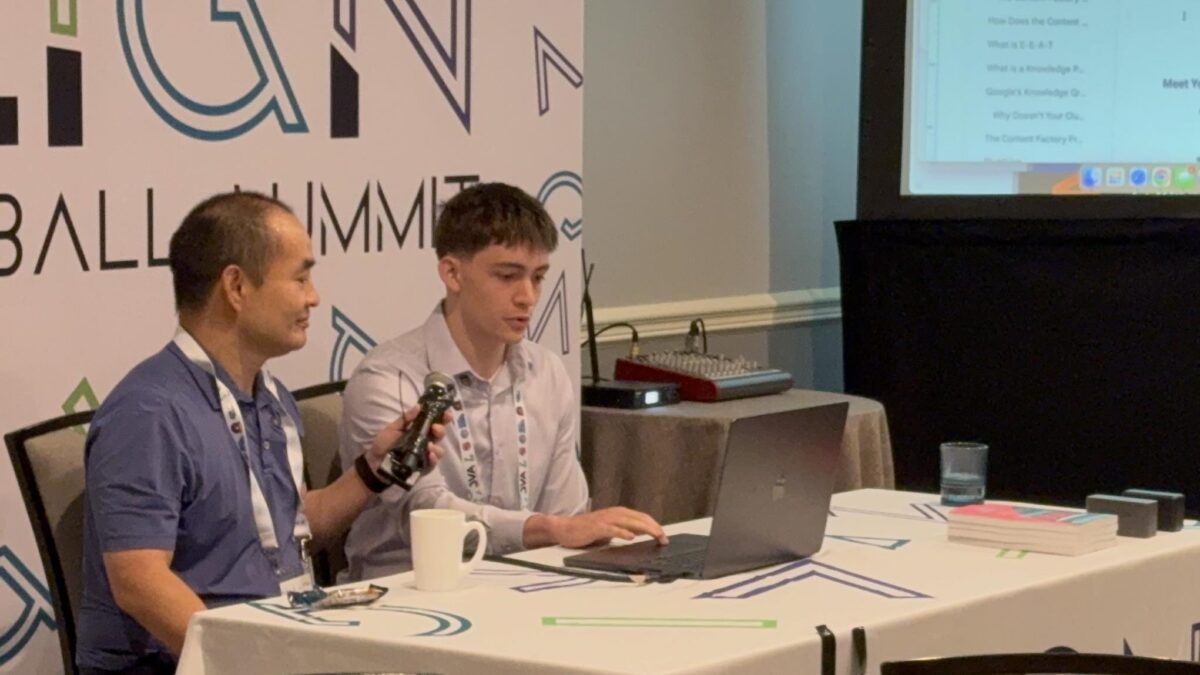Inside High Rise Academy: What You Can See in the Students
High Rise Academy exists because there’s a lot of noise in the AI and marketing space, and it’s hard to tell what training actually holds up in the real world. In this High Rise Influence YouTube video, Dennis Yu gave a simple filter for sorting that out. As he put it, “Don’t judge a program by the person selling it. Judge it by the students it produces.”
After Dennis lays out that idea, the video shifts to student builders and lets you hear directly from us about what we’re working on and how we’re applying the training with local service businesses.
The Principle Dennis Shared
Dennis’ point is blunt: it’s easy to make a program look good on the surface. The harder test is what students can actually produce once they’re inside it — their work, their thinking, and how that work holds up when applied to real clients.
That’s why the video centers on the people inside the program. You get to see how students talk about their work, what they’re building, and the kinds of problems they’ve learned to solve for clients.
What High Rise Academy Trains
High Rise Academy is an apprenticeship for young adults who want to build a concrete skill set in AI‑assisted marketing. The training is tied to local service businesses because the work is practical and the feedback is immediate.
Students practice:
- Building and improving personal brand sites and business sites
- Using AI tools to speed up research, content production, and operational tasks
- Running and refining ads using proven systems like Dollar a Day, while tracking performance
- Managing deliverables, communication, and client relationships
The idea is to learn repeatable systems and apply them on live accounts, so students leave with work they can stand behind.
Student Examples From the Videos
Dylan Haugen (Me)
I came into the program as a content creator and professional dunker. I knew how to grow an audience, but most of that lived on platforms I didn’t control. The shift for me was learning how to turn content skill into owned assets and clear client value.
What that looked like:
- Building a personal brand website I control
- Strengthening search presence, including my Knowledge Panel
- Learning to package content and relationships into services for local businesses
- Delivering real marketing outputs alongside the team
Jack Wendt
Jack’s story shows what happens when someone combines big‑picture vision with consistent execution. He’s been able to travel and still build because he runs work like a professional: projects stay on track, communication stays clear, and relationships keep compounding.
What stands out in his path:
- He builds partnerships and opportunities through strong relationships
- He keeps a steady operating rhythm even while moving across time zones
- He treats marketing like a long game, not a short sprint
Luke Crowson
Luke started in fitness coaching, and Dennis noticed something that carries over into marketing: he cares about outcomes and sticks with a process. Inside the program, Luke applies that mindset to client work that’s built on steady improvement.
His focus areas include:
- Campaign structure and ongoing tuning
- Landing page and site improvements
- Lead quality and follow‑up alignment with owners
The takeaway here is straightforward: consistent, client‑first execution plus good process is what drives dependable results.
Sam McLeod
Sam is still in school and leans heavily into engineering. His role is building tools and workflows that remove repetitive work for students and standardize delivery for clients.
Where that shows up:
- Automating tedious steps so students focus on high‑value tasks
- Turning proven processes into repeatable workflows
- Supporting scale without lowering quality
One Shared Thread
Different backgrounds, same direction: we’re learning practical systems and applying them to real businesses. And the four of us you saw in the video are also building this alongside Dennis. We are founders of High Rise Influence and Local Service Spotlight, so we’re learning how to create an agency, start a business, and pressure‑test what we learn by using it every week.
Advice We Shared at the End
We wrapped the video with short advice for anyone considering this path:
- Use AI like a teammate. It helps you draft, research, and troubleshoot faster, but you still steer the work.
- Mindset drives follow‑through. Skill only compounds if you stay in the game long enough to apply it.
- Aim for steady improvement. Getting a little better daily beats waiting for a perfect moment.
- Learn by doing. You grow fastest when you ship work, get feedback, and refine.
Takeaway
Dennis’ filter is simple: student work tells you more than marketing ever will. The video applies that idea by showing what students are building and how they think about the work.
If you’re evaluating any program in AI or marketing, whether it be the High Rise Academy or something else, look for a trail of real output: projects you can inspect, processes students can explain, and progress that shows up across more than one person. That’s the safest way to decide what’s worth your time.











